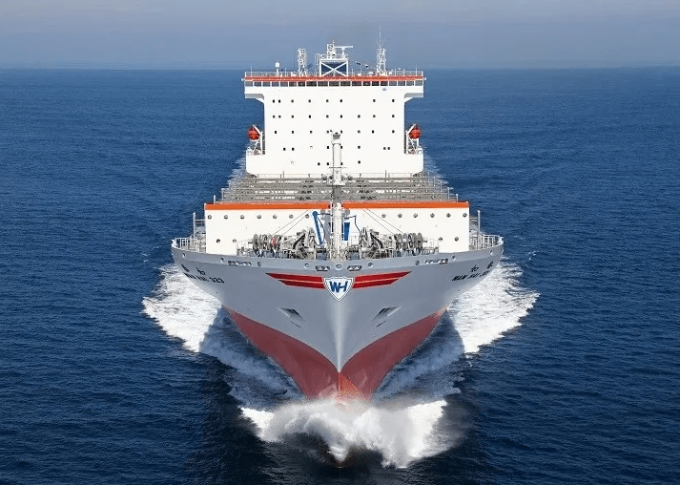Liners add capacity to Asia-ECSA as ocean rates hit 18-month high
With Asia-South America ocean freight rates at an 18-month high of around $4,350 per 40ft, ...

Taiwanese carrier Wan Hai could be turning the corner in its quest to return to profitability, reporting a 21% year-on-year growth in revenue last month.
This will boost the carrier’s chances of joining THE Alliance east-west vessel sharing agreement as a replacement for the departing Hapag-Lloyd.
Whether that cooperation will also include Asia-Europe remains to be seen, given Wan Hai’s previous unhappy relationship with the trade. Its joint Asia to North Europe service with Singapore’s Pacific International Lines ended in 2008 after heavy losses, was briefly resumed in 2010, but again suspended due to the high costs of the panamax vessels deployed, compared with the much lower costs of the larger ships operated by its peers.
After constantly being the most profitable carrier since its exit from Asia-Europe, thanks to its strategy of concentrating on niche markets and core intra-Asia business, Wan Hai slumped to a net loss of $188m last year, mainly be attributed to the transpacific, where its revenue slumped some 80% on 2022.
Breaking out from its niche trade strategy, the carrier launched standalone transpacific services to the US west coast in 2020 and extended its coverage to the east coast the following year.
It was therefore in a good position to take advantage of the skyrocketing freight rates, fuelled by high demand and supply chain congestion, which contributed to a $3bn net profit in 2022.
In a growth-focused newbuild buying spree, Wan Hai ordered 41 in the first half of 2021 and, according to Alphaliner data, the carrier is now the 11th largest container line, with a fleet of 116 vessels for a capacity of 464,800 teu, including 14 of 13,000 teu .
Only six ships in the Wan Hai fleet are chartered-in, the rest are owned, and the carrier has an orderbook of 16 vessels, with a capacity of 111,298 teu.
Adding to speculation that Wan Hai could join THE Alliance was the recently announced joint transpacific service with THEA’s soon to be lead line, ONE, which will partner with Wan Hai on its revamped AA3 service, (ONE’s Asia Pacific 1), contributing five 13,000 teu vessels and ONE supplying two similar.
With the departure of Hapag-Lloyd next February to join Maersk in the new Gemini Cooperation, the remaining THEA partners, ONE, Yang Ming and HMM, will find it challenging to compete with the market share power of MSC alone and the Ocean and Gemini alliances.
Nevertheless, ONE CEO Jeremy Nixon played down the impact of Hapag’s resignation from THEA at the recent S&P Global TPM24 conference in Long Beach, California.
Moreover, he was bullish on ONE’s aspirations within and outside THEA, announcing that the carrier would launch more independent services this year while Hapag was still a member.
And on speculation during TPM of a replacement for the German carrier in the alliance, Mr Nixon teased the audience, saying there were a number of discussions under way and, “early next month we will have an update on that”.
Comment on this article